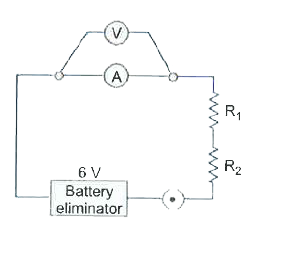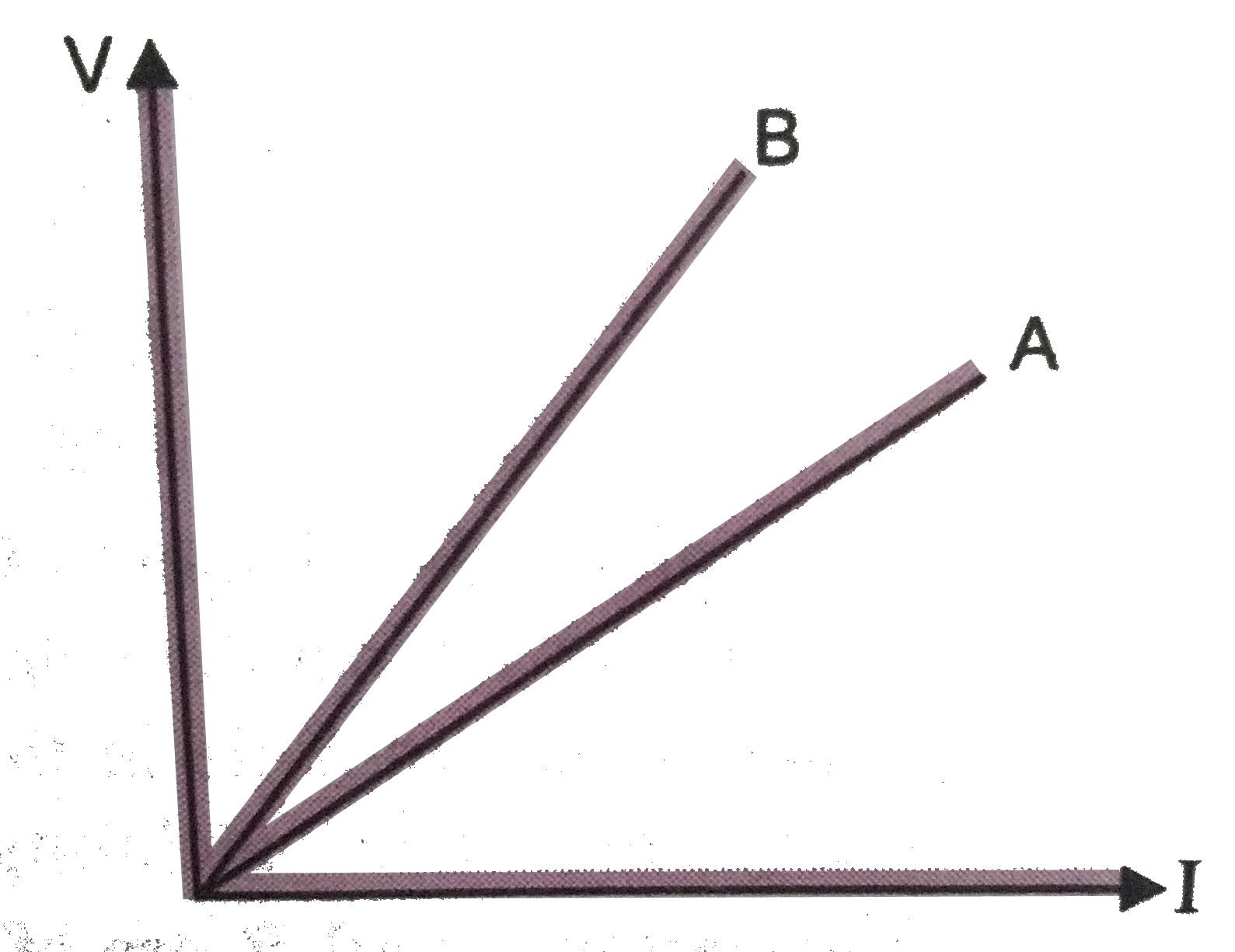Two students perform experiments on series and parallel combinations of two given resistors R1andR1 and plot the following V -1 graphs [Fig. 5.24.]. Which of the graphs is/are correctly labeled in terms of the words 'series' and 'parallel'? Justify your answer.
![Two students perform experiments on series and parallel combinations of two given resistors R1 and R1 and plot the following V -1 graphs [Fig. 5.24.]. Which of the graphs is/are correctly labeled in terms of the words 'series' and 'parallel'? Justify your answer.](https://d10lpgp6xz60nq.cloudfront.net/physics_images/BMS_V03_C05_S01_024_Q01.png)
We know that the resistance (Rs) in series combination
of two resistor is more than the resistance (Rp) in parallel
combination of the same two resistor. As I = V/R, for a given
potential (V),I<IP. In both the graphs, for a given potential
difference (V) across each combination, Is<Ip. Hence, both the
graphs are properly labeled.
Topper's Solved these Questions
- ELECTRIC CURRENT AND CIRCUITBOOK - CENGAGE PHYSICSCHAPTER - ELECTRIC CURRENT AND CIRCUITEXERCISE - Solved Examples
12 Videos
- ELECTRIC CURRENT AND CIRCUITBOOK - CENGAGE PHYSICSCHAPTER - ELECTRIC CURRENT AND CIRCUITEXERCISE - Exercise 5.1
28 Videos
- ELECTRIC CURRENT & CIRCUITSBOOK - CENGAGE PHYSICSCHAPTER - ELECTRIC CURRENT & CIRCUITSEXERCISE - Kirchhoff s law and simple circuits
15 Videos
- ELECTRIC FLUX AND GAUSS LAWBOOK - CENGAGE PHYSICSCHAPTER - ELECTRIC FLUX AND GAUSS LAWEXERCISE - MCQ s
38 Videos
Similar Questions
Two students perform the experiment on series and parallel combinations of two given resistors R1 and R2 and plot the following V-I graphs (a) and (b).
Which of the graphs is (are) correctly labelled in terms of the words 'series' and 'parallel'? Justify your answer.

View SolutionTwo students perform experiments on two given resistors R1 and R2 and plot the following V-I graphs. If R1>R2 which of the two diagrams correctly represent the situation on the plotted curves? Justify your answer.

View Solution
Knowledge Check
For students performed experiments on series and parallel combination of two given resistors R1and R2 which obey Ohm's law and plotted the following V-I graphs :

Which of the graphs is correctly labelled in terms of 'series' and 'parallel' ?Agraph ABgraph BCgraph CDgraph DTwo students perform experiments on two given resistors R1andR2 and plot the following V-I graphs. If R1>R2, which of the diagrams correctly represent the situation on the plotted curves?
A B
B C
C D
D
In parallel combination, the effective resistance (of R1 and R2) is given by
AR=R1R2R1+R2B1R=1R1+1R2CR=R1+R2DR=1R1+1R2
The V - I graphs for two resistors and their series combination are shown in Fig 5.23. Which one of these graphs represents the series combination of the two resistors? Given reason for your answer.

View SolutionIn an experiment to find the equivalent resistance of a series combination of two resistors R1 and R2,a student uses the circuit shown here. Will the circuit give the correct reading for current I and voltage V ? Justify your answer.

View SolutionThe V−I graphs of parallel and series combinations of two metallic resistors are shown in (Fig. 3.53). Which graph represents the parallel combinations ?
 .
.
View SolutionFigure shows charge (q) versus voltage (V) graph for series and parallel combination to two given capacitors. The capacitances are:

View SolutionConsider two resistors R1 and R2 in series. The current flowing through R1 and R2 is
View Solution
